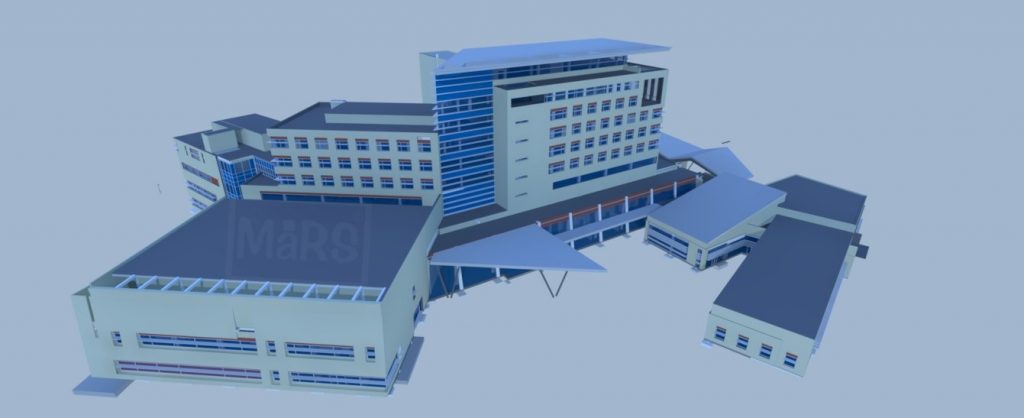With the time crunch rising exponentially with the new demands of construction, the best suitable row that peeps in lies with the “Modular and Prefabricated Modular Construction” or what we call DFMA
Imagining a house being completely built at factories and placed at the desired location is not a dream anymore with the advent of prefab constructions.
But what stands aside is the modular construction using BIM or rather, BIM Integrated Prefab Construction.
How can BIM Modular Construction Make the future look Bright and Construction Easy?
1. Construction Productivity along with exceptional Speed of completion for the project
One of the most vital and the main agenda of the model of DFMA or Modular Construction lies in the fact of the enhancement of productivity and speed with which the model can be delivered from the initial stage to the delivery stage.
Beyond Quality Management, modular construction can prove to be beneficial in terms of the Relocate options for the buildings (easy to carry and place anytime, anywhere).
Also, the strength of modularly built buildings stands strong due to the fact that they are made to withstand due pressure by individual construction, thereby increasing their strength and resilience power.
The dependency on delays due to weather is further reduced, again ramping up the time for delivery of the project and thus a strong, robust foundation is possible with a quick time frame, Interesting Isn’t it?
2. Digitization of the whole construction Project
With Prefab Construction, what is needed is the visualization of the model, utilization of BIM for structuring purpose, implementation of the workflow, managing the construction, and finally assembling the model at the site. The easy to go task can be highly digitized and the track record can be maintained without any hassle.
3. Cost-efficient
How can Modular Construction be efficient in terms of the cost-benefit analysis?
Well, why can’t it be?
There is no need to transport men, raw materials, equipment, or BIM Project Managers to the site. The onsite deployment of labor can be easily avoided. It helps in the redundancy of tasks, reduction in the prefabricated wastes as well as helps to increases the ROI of the project as a whole.
4. MEP Coordination is something that can’t be missed
The most time-consuming job can be done quite easily and in a streamlined flow, just via offsite coordination. The Mechanical, Engineering, and Plumbing (MEP) requirements of the models need not be planned standing at the site rather everything will be planned and what will be left will only be the onsite deployment.
5. Saves Time and Effort.
Minimizing construction costs is also added, along with minimized labor costs on-site, on top of all-around project management for the quick delivery of projects. Ease of collaboration and communication is facilitated via these BIM Prefab Models.
6. Environmental Benefits and Sustainability
The reduction of the cost is aided by the reduction in the environmental impact of wastage, noise, air, and surrounding pollution. A more sustainable and Environmental Friendly Option to opt for BIM Modelling and prefab Designing.
7. Efficient Handling of Space Crunch
The best part of dealing with Prefab Model Construction is the growing space crunch that can be added as one of the most important factors to advocate for such models.
One of the biggest challenges in the prefab models lies well in the fact that if the buildings are not constructed accurately as per the measured values, then the efforts would be ruined as the model won’t get fit, leading to a cumbersome process
This challenge has a solution. Accurate digitized measurements rather than relying on manual equipment and streamlining this digitized data to guide a smooth flow of work overall—this is nothing but Integrating Lean BIM in Modular Construction.
8. Integrated Lean BIM with the production Control
A complete project Mapping with Planning, Modelling, Real-time visualization, Risk, and Clash Mitigation lies a crucial part of Prefab Modular Project Management and Modelling.
Conclusion:
The Future lies in the efficient adaptation to the growing trends. The advantages of these technologies are far more leading than the fallouts or the challenges. The BIM Modelling Integrated for modular construction can help in the growth of the AEC Industry. The ease with which the modular prefab models can be constructed as well as planted on-site without affecting nearby buildings or the environment loudly speaks in favor of the benefit the technology offers. The mitigation of onsite risks, the additional freight charges, the onsite labor charges, and effective planning is what makes the technology stand out and be adaptable.



